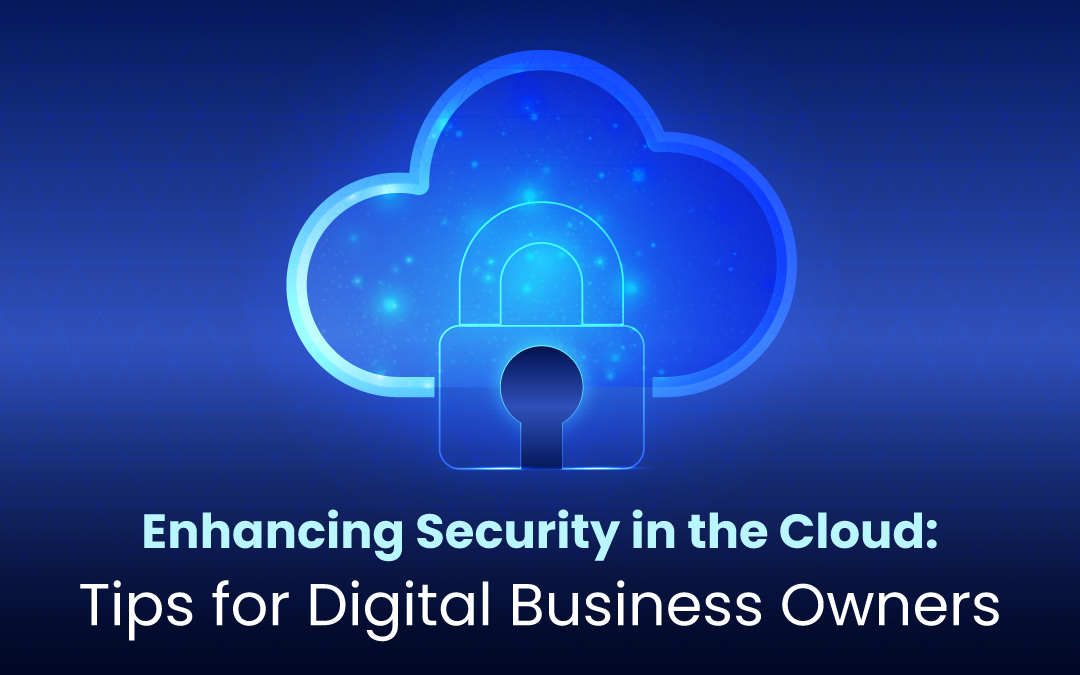
The cloud offers convenience, scalability, and cost efficiency, but without proper security measures, your business data may be vulnerable to cyber threats. This makes it essential to adopt security practices to protect your digital assets and maintain the trust of your customers.
A proactive approach can help you prevent breaches and secure your sensitive information—ultimately protecting your business from unauthorized access and data loss, and keeping your systems resilient in the face of potential threats. Taking the right precautions today will help you avoid costly and damaging incidents in the future, ensuring smooth and reliable business operations.
Strengthen Access Control
Ensuring that only authorized personnel have access to specific resources minimizes the risk of data breaches and helps maintain the confidentiality of your business information.
Adding an extra layer of security through multi-factor authentication (MFA) makes it harder for attackers to gain access. With MFA, even if someone gains your password, they will need additional information, like a one-time code, to complete the login. This extra step significantly reduces the chances of unauthorized access to your systems.

Enforce Role-Based Access Control (RBAC)
Assign permissions according to specific duties to reduce the risk of accidental or malicious data exposure. Ensure that employees only have access to the information they need to perform their tasks, thereby preventing unnecessary exposure to sensitive information.
Regularly Review Access Privileges
Conduct regular audits of user accounts and permissions to verify that access levels are appropriate. Employees who change roles or leave the company should have their access revoked or adjusted promptly to avoid unauthorized access. Periodic reviews help ensure that your access control policies remain up-to-date and effective, reducing potential vulnerabilities.
Encrypt Data to Ensure Confidentiality
Data encryption is essential to protect sensitive information both in transit and at rest. Encryption converts data into a secure format that can only be read by those with the correct decryption key, providing an extra layer of protection for your business data.
Encrypt Data in Transit and at Rest
Data in transit refers to information being transferred between locations, such as moving data between servers or users accessing files.
- Encrypting data in transit helps prevent interception by malicious actors.
- Encryption at rest means securing data stored on cloud servers to protect against unauthorized access, even if the storage is compromised.
Ensuring encryption at both stages protects data throughout its lifecycle.
Use Strong Encryption Protocols
Ensure that your cloud provider uses strong encryption protocols, such as AES-256, to secure your data.
Verify that the provider complies with industry security standards, including GDPR, HIPAA, or SOC 2, depending on your business's requirements.
Strong encryption ensures that even if data is intercepted, it remains unreadable without the appropriate key, providing critical security for your sensitive information.
Implement Robust Backup and Disaster Recovery Plans
Backups provide a safety net if primary data is lost or compromised. Schedule automatic, regular backups for all your critical data to ensure you always have a recent copy available.
Storing backups in geographically separate locations helps protect against large-scale incidents, such as natural disasters or regional outages, that could affect multiple data centers.
Test Disaster Recovery Procedures
Test your disaster recovery plan regularly to identify weaknesses and confirm that data can be restored efficiently in a crisis. Consider the following points to enhance your disaster recovery process:
- Establish clear roles and responsibilities for your team during the recovery process.
- Set realistic recovery time objectives (RTO) and recovery point objectives (RPO) to minimize downtime.
- Use automated tools to streamline the restoration process and reduce the chances of manual errors. This proactive approach will minimize downtime and data loss if an incident occurs, ensuring that your business can recover quickly and resume normal operations.
Monitor and Manage Cloud Activity
Cloud activity monitoring allows you to detect anomalies and respond quickly to potential security threats. Visibility is key to maintaining a secure environment for your cloud-based operations. Proactively monitoring your cloud infrastructure can help you catch suspicious activities before they turn into significant issues.
One issue is that industry-specific differences can be vast, so finding a solution tailored to your specific circumstances is usually best. If you’re in the e-commerce industry, using specialized e-commerce cloud platforms can offer enhanced security, scalability, and tailored features for your business. On the other hand, if you’re in the healthcare industry, cloud platforms that emphasize HIPAA compliance and patient data protection are essential to ensure legal and ethical standards are met.
Evaluate platforms that provide built-in security compliance in order to successfully meet industry standards. Scalable resources will accommodate growing demand without compromising performance. Consider also the monitoring capabilities that come with these platforms, as they can play a vital role in ensuring ongoing security.
Enable Logging and Auditing
Set up logging for all cloud services to keep a record of activities and detect unusual behavior. Auditing tools allow you to regularly review these logs for any discrepancies or signs of unauthorized access. This proactive monitoring can help you identify and respond to threats before they escalate, ensuring that your data remains secure.
Use Security Information and Event Management (SIEM) Tools
SIEM tools aggregate and analyze data from different parts of your cloud infrastructure, allowing you to detect suspicious activities and respond quickly.
These tools provide real-time insights that can help you understand security incidents and take swift corrective actions. By centralizing security data, SIEM tools make it easier to track potential issues and coordinate your response effectively.
Set Up Alerts for Unusual Behavior
Set up automated alerts to notify you of unusual activities, such as login attempts from unrecognized devices or locations, sudden data downloads, or failed access attempts. Prompt alerts allow you to investigate potential threats immediately, reducing the risk of breaches. Reacting quickly to such alerts can prevent minor incidents from escalating into full-blown security crises.
Work with Trusted Cloud Providers and Stay Informed
Evaluate the security features and certifications of potential providers before making a choice. Look for providers that offer robust encryption, regular security updates, and compliance with industry standards. Additionally, consider features like data redundancy, monitoring, and physical security measures to ensure your data is well protected.
Stay Updated on Security Trends
Follow reputable cybersecurity news sources and consider working with a cybersecurity consultant if necessary.
Educate your team on recognizing and avoiding potential threats like phishing attacks and social engineering. Staying informed about current security challenges helps you anticipate issues and take preventative action before threats materialize.
Invest in Security Awareness
Creating a security culture within your organization ensures that everyone understands their role in keeping data safe. Conduct regular training sessions to teach employees how to recognize security risks and follow best practices.
Encourage a proactive approach to security, where employees report potential vulnerabilities or suspicious activities. The more knowledgeable and aware your team is, the stronger your overall security posture will be.
Conclusion
Strengthening access control, encrypting data, implementing robust backup strategies, monitoring cloud activity, and working with trusted providers can significantly reduce the risk of cyber threats and ensure the safety of your business.
While no system is immune to threats, following these best practices will help you minimize vulnerabilities and keep your business running smoothly. As digital threats evolve, your dedication to maintaining strong cloud security will play a critical role in safeguarding your business's future.
Share this post
Leave a comment
All comments are moderated. Spammy and bot submitted comments are deleted. Please submit the comments that are helpful to others, and we'll approve your comments. A comment that includes outbound link will only be approved if the content is relevant to the topic, and has some value to our readers.

Comments (0)
No comment